Worowo 2024-11-12
Worowo Railway Station, West Pomeranian Voivodeship.
Geographic coordinates: 53.693N 15.631E. Elevation 79 m (259.19 ft). Address: Worowo, West Pomeranian Voivodeship.
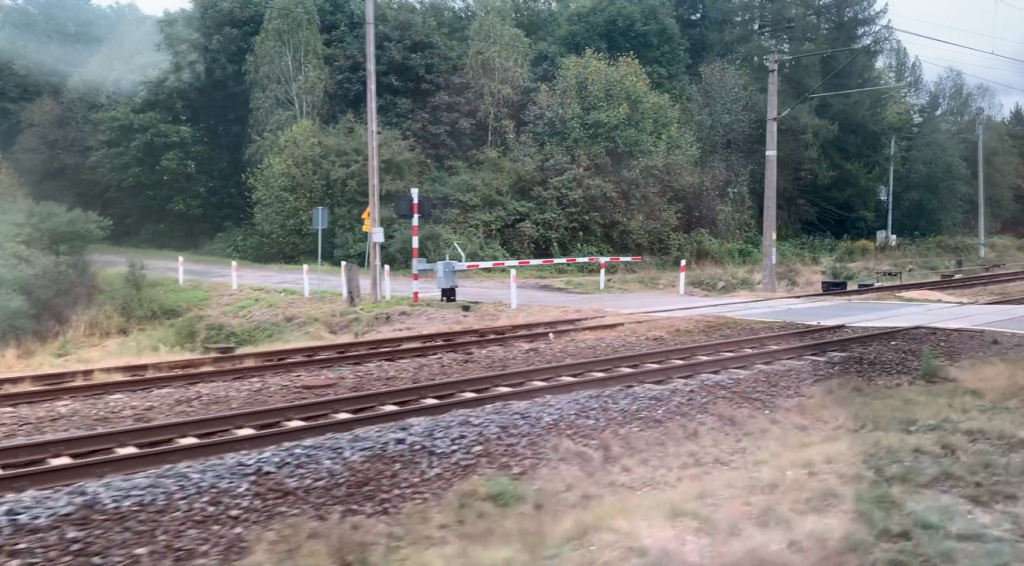
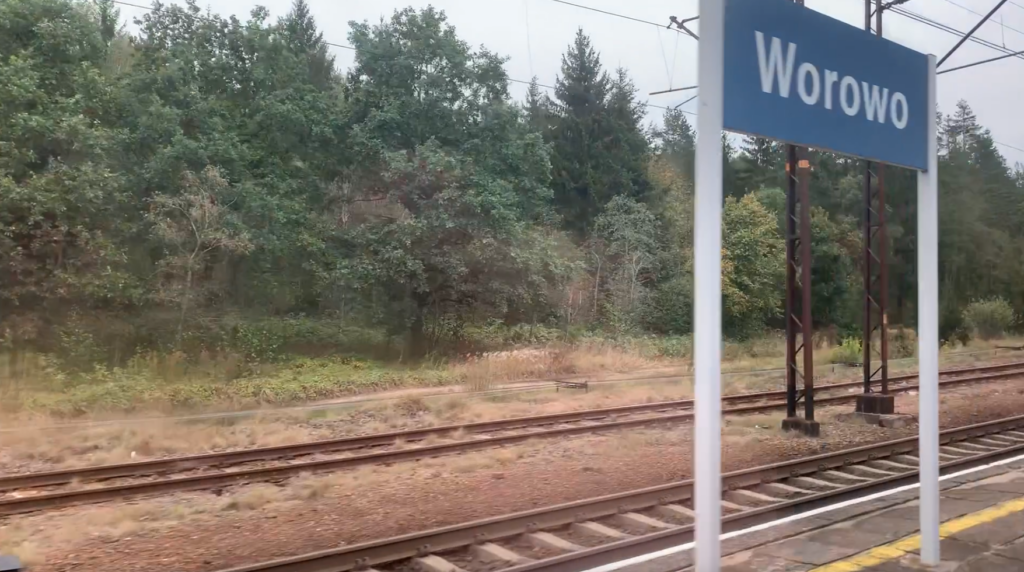
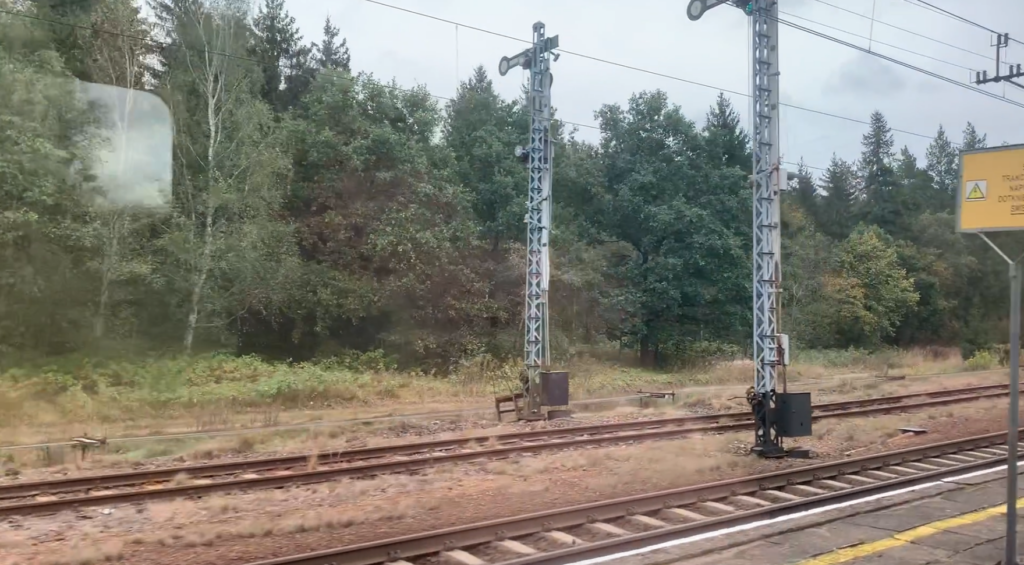
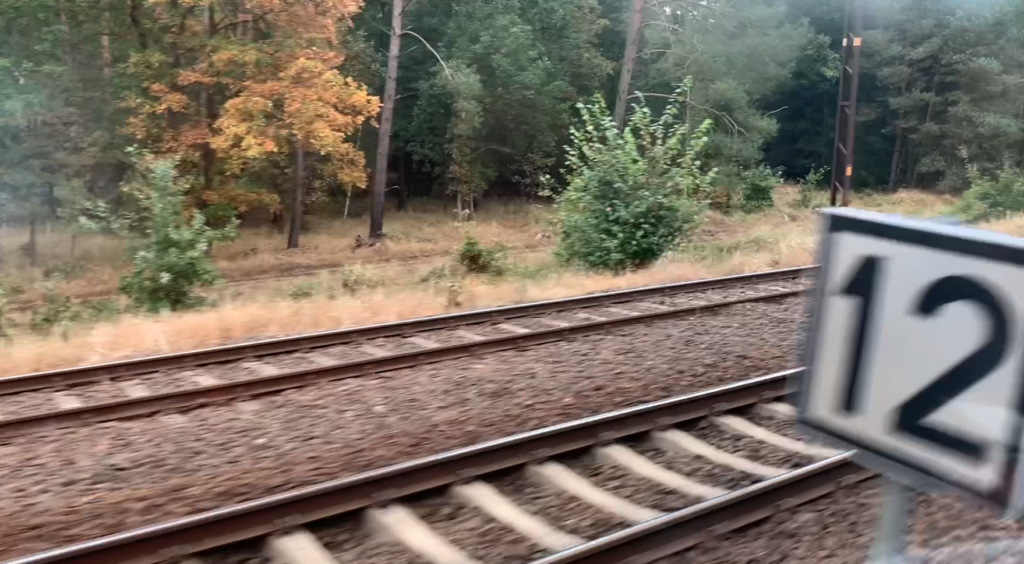
Village Worowo.
Worowo is a village located in the West Pomeranian Voivodeship, in the Łobez district, in the Łobez commune. The village has a population of 211 (2018). The most valuable monument of the village is the half-timbered church from 1707, dedicated to the Name of Mary. The village was founded in Germanic times, in the 17th century, and at that time was called Wurow. The distance from the station to the village is about 1,500 m.
Village Prusinowo.
As a result of the construction of the Worowo railway station, the village of Prusinowo (Łobez district) was created, on the western side of the tracks. Prusinowo is located in the West Pomeranian Voivodeship, in the Łebsko district, in the Łobez commune. The village has a population of 154 (2018). There are 30 residential houses in the village. In the village of Prusinowo there is a hydroelectric power plant on the Rega River.
Worowo railway station.
Worowo railway station was built on railway line No. 202, as a result of the construction of the Worowo – Resko Północne – Płoty – Wysoka Kamieńska railway line. In Poland, the line was designated LK No. 420. The first section of LK No. 420 Worowo – Resko Północne, was opened on February 1, 1906.
At the Worowo station, a typical Prussian station building was built, which was devoid of the flaws of previous structures. The whole was built of red brick. The Prussian wall was completely abandoned. Tyrolean architectural elements were used, in the form of external braces of the roof structure. The building consists of two blocks. The main part is three-level with a developed attic and is three-axis. The second block is smaller, one-story with a developed attic. Large windows were installed, topped with arches at the top, and grates were installed in the lower windows. The main part of the building is covered with a hipped, steep roof, and the second part is covered with a gable roof. The whole was covered with red roof tiles and gutters were installed. The building received a very high chimney, because there were tall trees nearby, which limited the smoke from the station. The inscription Wurow was placed on the front wall, and after 1945, WOROWO. The station had a ticket and luggage office and a waiting room. There was no restaurant due to the low number of passengers. Toilets were located in a separate building. From the very beginning, there was a telephone exchange and a telegraph at the station. There was an electrical installation and electric lighting. Heating was by means of furnaces.
A signal box was added to the station building, on the south side, which protrudes about 1.5 m in front of the station front. The signal box is equipped with three huge windows, which provide a good view of the station plain. The signal box is covered with a flat roof. Currently, it is a signal box with “Wo”. The executive signal box “Wo1” is located on the side of the Łobez station, on the west side of the tracks. Shape semaphores were installed, which are used to the present day (2024). Of course, the semaphores are renovated and maintained in full technical efficiency.
At the Worowo station, two earth platforms with stone edges were built. Over time, part of the platform surface was made of concrete pavement tiles measuring 0.50 m x 0.50 m, and the platform edge was made of concrete. Platform 2 is only 2.50 m wide. The platforms are lit by street lights. Each platform serves a train on one track. Access to the platforms is at the level of the tracks. There was no tunnel or footbridge over the tracks. No water tower, coal bunkers or workshops were built. A house for railway workers with several apartments was built near the station.
In 2016, the ticket office and waiting room were closed. Tickets can be purchased online or on the train. A bus shelter with a bench was installed for passengers. The shelter is located right next to the station on the northern side. It is not possible to install a shelter on the platforms because they are very narrow.
Near the station, on the northern side, at the fork of LK No. 202 and LK No. 420, the “Worowo” traction substation was placed.
Currently (2024) three main tracks are used at the station. The tracks at the station are laid on concrete (reinforced concrete) and wooden sleepers. On the other hand, the main tracks have been laid on pre-stressed concrete sleepers with spring fastenings, since 2010. The station serves as a passenger stop and a passing place for freight trains.
Worowo station handles small passenger traffic. Up to 50 passengers per day. This traffic has been maintained for the last 10 years. On November 10, 2024, 11 passenger trains, operated by PolRegio, departed from Worowo station. It was possible to travel to the following stations: Koszalin, Słupsk, Szczecin Główny.
Remember that there was also a developed network of narrow-gauge railways nearby. The Rega River flows near the Worowo station, and on it stands an over 100-year-old viaduct of the former narrow-gauge railway route. The tracks are gone, but the earth embankments remain, and bicycle paths have been built in their wake.
An almost accidental event.
On October 17, 2017, a dangerous situation occurred at the Worowo station. According to the findings, the driver of the TLK 81104 RYBAK train on the Szczecin Główny – Białystok route ignored the semaphore signal prohibiting departure from the Worowo station. At the same time, the TLK 58106 ŻUŁAWY train on the Olsztyn Główny – Szczecin Główny route was entering the station. The trains were on the same track. Thanks to the immediate reaction of the traffic controller, who activated the RADIO-STOP signal, a tragedy was avoided. The trains stopped about 100 m from each other. The train from Szczecin Główny to Białystok was carrying 130 passengers, and the train from Olsztyn Główny to Szczecin Główny was carrying 116 passengers. However, from the photos posted by internet users, the matter was not so obvious. Both trains did not stop at the Worowo station, but had a passing loop here. LK No. 202 is single-track before and after the station. Therefore, one train should have entered the station on track No. 1, and the other train on track No. 3. The photos show that both trains are within the station boundaries, on a single track at platform 2. This means that one of the trains has not yet had its route laid. In addition, the entire station is on the curve of LK No. 202.
Railway Line No. 202 Gdańsk Główny – Stargard.
LK No. 202 Gdańsk Główny – Stargard runs through Worowo station, which stretches in the northern part of Poland, in the latitudinal direction and runs through the Pomeranian Voivodeship and the West Pomeranian Voivodeship. LK No. 202 has a length of 334.363 km. The line is electrified with 3 kV DC. The maximum speed of the train is 140 km/h. The line is single-track and double-track. Worowo station is located on 269.670 km of the line. Launch of the railway line; 1859.06.01 Stargard – Koszalin. 1869.07.01 Koszalin – Słupsk. 1870.09.01 Słupsk – Gdańsk Główny. Construction of the second track; 1909, Lębork – Słupsk. 1909, Białogard – Runowo Pomorskie. 1902, Runowo Pomorskie – Stargard. In 1945, the second track was dismantled by the Soviets. 1953, Runowo Pomorskie – Chociwel. 1955, Chociwel – Ulikowo. By 2024, it had not been possible to rebuild the second track on the entire LK No. 202. Electrification was carried out in stages; 1969.09.13 Gdańsk Główny – Gdynia Główna. 1969.10.19 Rumia – Wejherowo. 1989.09.06 Wejherowo – Słupsk. 1988.12.02 Koszalin – Słupsk. 1988.06.30 Białogard – Koszalin. 1987.12.15 Świdwin – Białogard. 1987.07.15 Runowo Pomorskie – Świdwin. 1986.12.16 Stargard – Runowo Pomorskie.
Railway Line No. 420 Worowo – Wysoka Kamieńska.
LK No. 420 Worowo – Wysoka Kamieńska is a single-track, non-electrified line running latitudinally. LK No. 420 was 60.485 km long when it was put into service. Worowo station was the starting station. Additionally, a connecting line was built, which allowed direct trains from the Świdwin station (LK No. 202) to the Resko Północne (LK No. 420) direction, without entering Worowo station. Traffic was directed by the Worowo Zachodnie branch post “Vwr” or “Wwr”. Further on there were stations and stops; Poradz (2.429 km, elevation 94 m), Bełczyna (4.035 km, elevation 110 m), Przemysław (6.328 km, elevation 115 m), Starogard Łobeski (10.427 km, elevation 77 m), Maćkowo (14.923 km, elevation 45 m), Resko Północne (junction station, 18.493 km, elevation 51 m), Komorowo Pomorskie (23.709 km, elevation 53 m), Dobiesław (26.695 km, elevation 49 m), Płoty (junction station, 30.496 km, elevation 32 m), Sowno (34.566 km, elevation 32 m), Mechowo Łobeskie (36.764 km, elevation 39 m), Truskolas (39.768 km, elevation 39 m), Unibórz (44.544 km, elevation 41 m), Barnisławice (46.492 km, elevation 32 m), Golczewo Pomorskie (junction station, 49.826 km, elevation 24 m), Kretlewo 55.513 km, elevation 19 m), Wysoka Kamieńska (junction station, 60.485 km, elevation 15 m).
The line was opened in stages. On February 1, 1906, the Worowo – Resko Północne section was launched. On April 24, 1909, the Resko Północne – Golczewo Pomorskie section was launched. On December 20, 1910, the Golczewo Pomorskie – Wysoka Kamieńska section was launched. The suspension of passenger traffic on the line took place on 30 May 1992 and on the entire Worowo – Wysoka Kamieńska line. Freight traffic was suspended on 15 December 1995, Worowo – Resko Północne, on 30 April 1999, Resko Północne – Płoty, on 15 December 1995, Płoty – Golczewo Pomorskie, on 30 April 1999, Golczewo Pomorskie – Wysoka Kamieńska. In February 2013, the tracks were dismantled on the Resko Północne – Płoty section, and a little later on the Worowo – Resko Północne section.
Written by Karol Placha Hetman
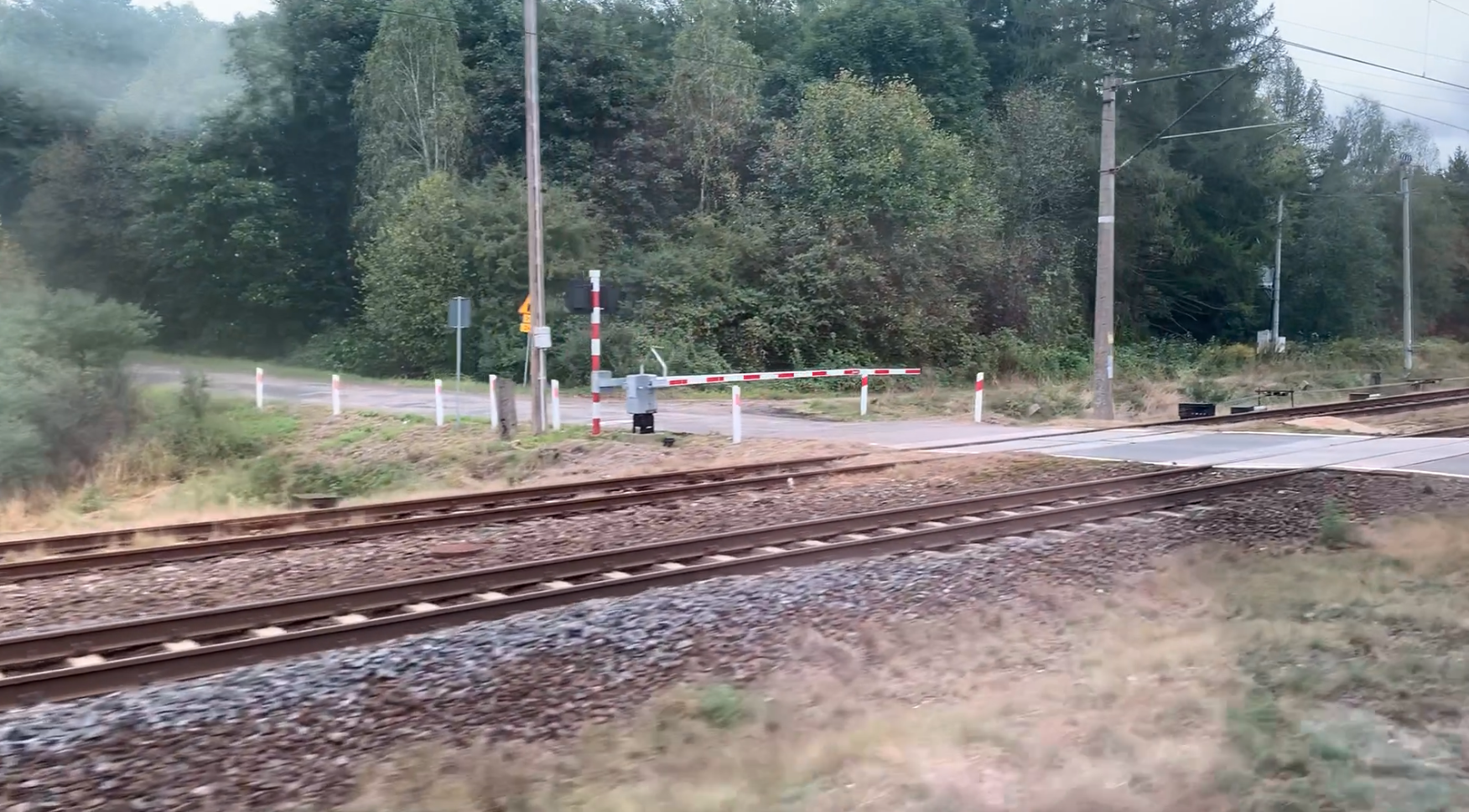
Leave a Reply
You must be logged in to post a comment.